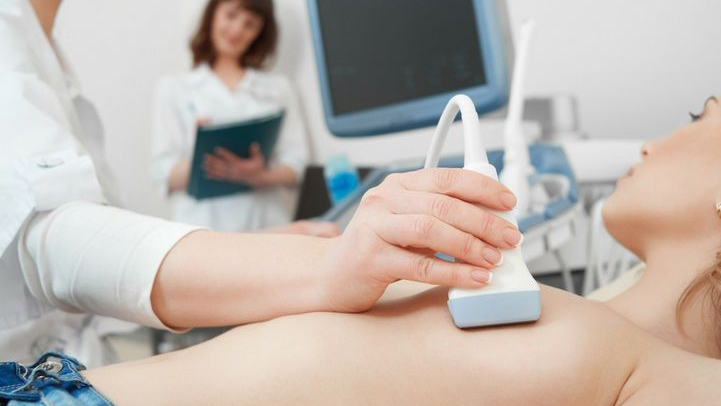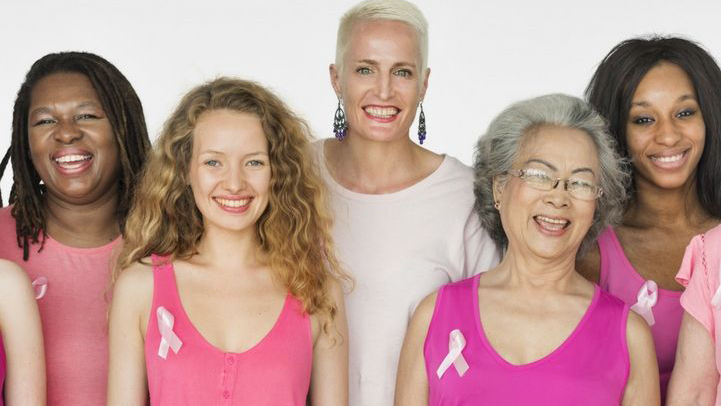Early Detection Means Saving Lives: Breast Cancer Awareness Month
8 minute read
October is Breast Cancer Awareness Month, which for a lot of people means wearing pink and taking part in fundraisers. As great as this is, the point of Awareness is to go beyond that.
| Related: 3 Health Benefits of Probiotics For Women |
Breast Cancer Awareness Month is an opportunity for you to learn about the cause. Educating yourself as to why the cause is so critical and what it aims to accomplish is the most important thing you can do in the month of October.
What Is Breast Cancer?
Before you can understand this disease you need to understand what cancers are at their core. Cancers are a collection of diseases characterized by the uncontrollable growth and spread of cells. This overgrowth occurs as a result of mutations to the genes that control the process. In solid organs such as the lung, liver or breast, these cells develop into a mass, and form a solid tumor. A malignant tumor is one that is able to spread across barriers and invade nearby healthy tissues.
With regards to breast cancer, the tumor can form in different parts of the breast but typically begins in the ducts. While it is most commonly thought of as a cancer affecting women, and it predominantly does occur in that gender, it is possible for men to develop breast cancer too. Like other cancers, breast cancer can be invasive and spread to other tissues or they can remain local. The local breast cancers are typically precancerous lesions that have not yet spread.

Early Detection - Signs & Symptoms
While breast cancer is often found after symptoms appear, it is possible for women to have no symptoms. This is why regular checkups are so important. Mammograms become strongly encouraged for women as they age. Most of your annual gynecological exams usually involve a breast exam too. At some point you also learned how to perform self-examinations.
Each and every one of these is vital to early detection and the best chances of eating breast cancer. It is critical for women to know what constitutes normal and healthy when it comes to self-monitoring. Sometimes the first sign is a lump that you may feel or that your doctor notices. Additional signs or symptoms can include:
♦ Swelling in part or all of the breast
♦ Dimpling or skin irritation
♦ Nipple pain
♦ Redness
♦ Scaliness
♦ Thickening of the nipple or breast skin
♦ Nipple discharge
♦ Nipple turning inwards
♦ Lump under the armpit
These signs usually alert you to the fact that something is not normal, and a checkup with your doctor is the next step. Breast cancer is typically diagnosed with a biopsy. Either a piece of tissue is removed or a needle can be used to extract cells from the infected area. For more serious cases, the biopsy of a lymph node may be required to determine the stage of the cancer.
Breast Cancer Treatment
A breast cancer diagnosis does not mean it is the end. Breast Cancer Awareness Month is a perfect example of the vast number of survivors out there. A large number of breast cancers are often treatable and the methods range from invasive surgeries to systemic therapies.
Surgery is usually the first step, followed up with a program of radiation treatment. In targeted forms of therapy, only the infected area is treated whereas with systemic therapies drugs are delivered through the whole body. The purpose of the systemic approach is to target any cancer cells that may have spread to other areas of the body. Systemic therapy can also be given before a surgery to help reduce the size of a tumor.
Treatment plans vary for each patient and according to the stage of the cancer. Specialists will take individual health factors into consideration as well as the size of the tumor, any spread and the stage of the disease. It is important to gather all treatment options, discussing pros and cons as well as any possible side effects. In some cases it is even worth getting a second opinion.

Breast Cancer and Genetics
Whether you experienced it for yourself or read about in the news, it is a common notion that genetics and family history are linked to higher risks of breast cancer. Now for the facts; eight out of ten women that get breast cancer do not have a family history. There is an inheritable mutation to breast cancer susceptibility genes (BRCA1 or BRCA2) that does increase the risk, however less than 10% of cases are caused by this.
Since there is a link and the mutation is real, there are certain situations in which doctors' will advise women to get genetic testing.
♦ breast cancer is diagnosed before the age of 50
♦ breast cancer in both breasts (same woman)
♦ male family members have had breast cancer
♦ breast cancer and ovarian cancer in the same woman or family
What You Can Do?
The sad truth about cancer of any kind is that it is non-discriminatory. Anyone can get it at any age, of any gender and any health level. There is no true way to prevent it. What you can do is reduce your risk of developing the disease. A woman's age is the predominant risk factor for breast cancer, with most cases occurring in women over the age of 50. That being said, every woman can benefit from following these recommendations.
| Related: Alkaline Foods That Help Prevent Cancer And Disease |
Stay active: Regular exercise keeps both the mind and body healthy, maintains a healthy weight and has benefits for every part of the body. It can be as little as 30 minutes a day to keep those doctors away.
Watch your weight: Increased body weight and weight gain increases the risks of breast cancer in women after menopause. Along with that exercise, make sure you follow a nutritious diet and avoid harmful behaviors such as smoking.
Limit alcohol: Moderate alcohol consumption can increase your risks, so it is recommended to have only one alcoholic beverage per day.
Hormone therapy: Many women after menopause start hormone therapy, but it can increase your chances of developing breast cancer. Be sure to discuss all the pros and cons of therapy with your doctor, especially if you have other risk factors.

How You Can Help?
You don't have to look for long on the Internet to find a local or national organization fighting against breast cancer. There are events and sponsorships as well as donation programs to fund the various research needed to find a cure. Charities are spread across the country looking for volunteers and donations. You can even get your friends and family together to form your own support group and fundraiser. For those who have personal experience with the disease, get out there and tell your survival story, rally the troops and make the much needed stand against breast cancer.
The Bottom Line
Apart from taking care of yourself and performing regular self-checks, there is much you can do to support the cause. Breast Cancer Awareness Month strives to educate people and increase awareness and lower the number of diagnosed cases each year. Despite all the efforts, metastatic breast cancer is incurable and currently 30% of women diagnosed with breast cancer will go on to develop this form. Early detection is the key, but without knowledge this cannot happen.












